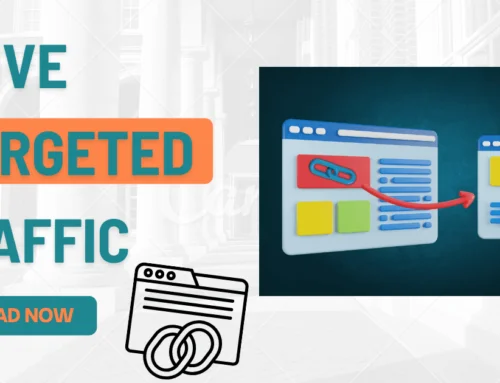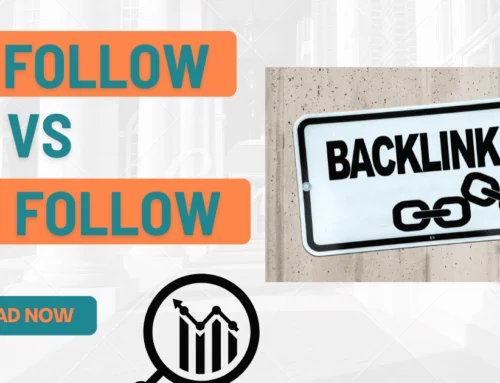The Ultimate Guide to Link Indexing: Understanding, Managing, and Optimizing Backlinks
You bought backlinks and are now wondering what happens next to help with your SEO efforts. Indexing is the answer. In the realm of search engine optimization (SEO), backlinks and their indexing are pivotal to achieving online visibility and authority. While many webmasters and SEO enthusiasts are familiar with backlinks, the concept of link indexing, particularly how to index backlinks effectively, is often less understood. In this comprehensive guide, we’ll explore what link indexing is, provide actionable strategies for indexing backlinks, and highlight why this process is crucial for your SEO success.
What is Link Indexing?
Link indexing refers to the process by which search engines like Google, Bing, and Yahoo discover, analyze, and store information about links on the web. When a search engine crawler (or bot) visits a webpage, it follows the links present on that page to explore and index the content of linked pages. Essentially, link indexing ensures that the links and the pages they connect to are included in the search engine’s database, making them eligible to appear in search results.
Key Aspects of Link Indexing:
- Discovery: The crawler discovers links by navigating from page to page.
- Analysis: The search engine evaluates the relevance, quality, and context of the linked content.
- Storage: The information about the links and their destinations is stored in the search engine’s index.
Why Indexing Backlinks is Important
1. Boosting Search Engine Visibility
Indexed backlinks are crucial for improving your site’s visibility in search engine results pages (SERPs). When a backlink is indexed, it means that the linked page is recognized by search engines and can potentially contribute to your site’s ranking. If search engines don’t index your backlinks, the potential SEO benefits from those links are lost.
2. Enhancing Crawl Efficiency
Indexed backlinks help search engine crawlers navigate your website more efficiently. A well-indexed backlink structure can improve the crawl budget, allowing search engines to discover and index more of your site’s content. This efficiency is especially important for large websites with numerous pages.
3. Building Domain Authority
Search engines use backlinks as a measure of credibility and authority. When authoritative sites link to your content and these links are indexed, they contribute to building your site’s domain authority. This, in turn, can enhance your site’s overall search engine ranking.
4. Improving User Experience
Backlinks that are indexed help users find relevant content through search results. This improved accessibility contributes to a better user experience, reducing bounce rates and increasing engagement.
How to Index Backlinks
1. Submit Your Site to Search Engines
One of the simplest ways to ensure that search engines index your backlinks is to submit your site to search engines. This can be done through webmaster tools like Google Search Console or Bing Webmaster Tools. Here’s how:
- Google Search Console: Go to the URL Inspection tool, enter the URL of your page with the backlinks, and click “Request Indexing.”
- Bing Webmaster Tools: Use the URL Submission tool to request indexing of your pages.
2. Create and Submit an XML Sitemap
An XML sitemap helps search engines find and index all important pages on your site. By including URLs that contain backlinks in your sitemap, you increase the chances of those pages being crawled and indexed. Here’s a simple process:
- Generate an XML Sitemap: Use tools like Yoast SEO or Screaming Frog to create a sitemap that includes all relevant URLs.
- Submit the Sitemap: Upload the XML sitemap to your site’s root directory and submit it via Google Search Console or Bing Webmaster Tools.
3. Improve Internal Linking
A strong internal linking structure can help search engines discover and index backlinks more efficiently. When you interlink your pages, you create pathways that lead crawlers to the pages with the backlinks you want indexed. Tips for effective internal linking include:
- Use Descriptive Anchor Text: Make sure the anchor text is relevant to the content of the linked page.
- Create a Logical Site Structure: Organize your content in a way that’s easy for both users and search engines to navigate.
4. Build Quality Backlinks
Focus on acquiring high-quality backlinks from reputable sites. High-quality backlinks are more likely to be indexed and can positively impact your site’s authority. Strategies for building quality backlinks include:
- Guest Blogging: Write valuable content for reputable sites in your industry.
- Content Marketing: Create compelling and shareable content that naturally attracts backlinks.
- Outreach Campaigns: Reach out to industry influencers and bloggers to promote your content.
It’s also very important to research and chose your keywords that will drive the best results for your business.
5. Monitor and Fix Broken Links
Broken links can hinder the indexing process. Regularly check for broken links using tools like Google Search Console or third-party link checkers, and fix them to ensure that crawlers can access your content. Broken links can also negatively impact user experience and SEO.
6. Use Social Media and Content Promotion
Promoting your content on social media and other platforms can lead to increased visibility and indexing. When your content gains traction and is shared across various channels, it can prompt search engines to crawl and index it more frequently.
7. Track and Analyze Backlink Indexing
Monitoring the indexing status of your backlinks helps you understand which links are being indexed and which are not. Use tools like Google Search Console and third-party SEO tools to track the status of your backlinks and identify any issues that may affect indexing.
Best Practices for Effective Link Indexing
1. Ensure Quality Content
High-quality, relevant content is more likely to attract and retain valuable backlinks. Focus on creating content that provides value to your audience and encourages other sites to link back to it.
2. Be Patient
Indexing can take time. Search engines may not index your backlinks immediately, so be patient and monitor the progress regularly. Consistent effort in SEO and backlink building will eventually pay off.
3. Keep Up with SEO Trends
SEO is constantly evolving. Stay informed about the latest trends and algorithm updates to ensure your link indexing strategies remain effective. Subscribe to industry blogs, attend webinars, and participate in SEO communities to stay ahead.
Conclusion
Link indexing is a fundamental aspect of SEO that impacts your site’s visibility, authority, and overall performance. By understanding what link indexing is, implementing strategies to index backlinks effectively, and adhering to best practices, you can enhance your site’s search engine rankings and achieve long-term success. Whether you’re managing a personal blog or overseeing a large-scale digital marketing campaign, mastering link indexing will help you maximize your SEO efforts and drive more organic traffic to your site.


